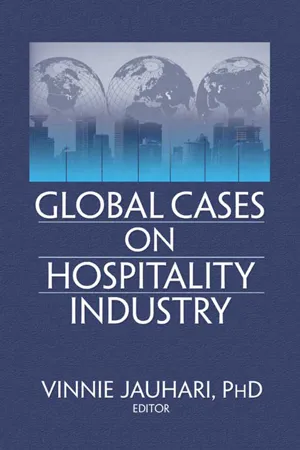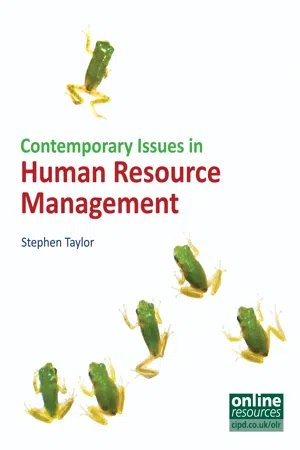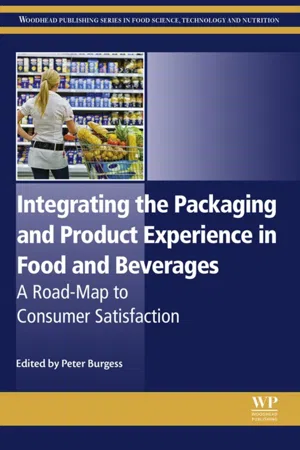Consumer Expectations
Consumer expectations refer to the anticipated level of quality, service, and value that customers expect from a business. These expectations are influenced by past experiences, marketing efforts, and the perceived reputation of the brand. Meeting or exceeding consumer expectations is crucial for customer satisfaction, loyalty, and positive word-of-mouth, which can ultimately impact a business's success.
6 Key excerpts on "Consumer Expectations"
- eBook - ePub
The Reign of the Customer
Customer-Centric Approaches to Improving Satisfaction
- Claes Fornell, Forrest V. Morgeson III, G. Tomas M. Hult, David VanAmburg(Authors)
- 2020(Publication Date)
- Palgrave Macmillan(Publisher)
...What do consumers hope (and demand) they will receive in their experiences with companies? We particularly focus on what many have claimed to be the “sky-rocketing” expectations of consumers in the modern economy. Next, we turn to an investigation of industries with high and low expectations, and industry -level changes in expectations over the last decade. The chapter closes with a look at the wisdom of the popular imperative for businesses to aim to “always exceed customer expectations,” and what future trends in customer expectations could look like. Key Conclusions While customer expectations have increased over the last 25 years, the change is not nearly as dramatic as many have depicted. In the aggregate, over this period customer satisfaction has kept pace (roughly) with rising expectations. Levels of customer expectations vary widely among industries, and changes in expectations vary widely as well, dispelling the notion that rising expectations are a universal phenomenon. Firms should avoid either attempting or promising to “always exceed expectations,” as such a strategy is virtually impossible to achieve and may ultimately be self-defeating. While companies must continue to set, manage, and meet expectations, it is unlikely that expectations will spiral out of control in the years ahead, even as innovations progress at a more rapid pace. 2.1 Are Customer Expectations Really Sky-Rocketing? A near-consensus among business and marketing professionals seems to have emerged: the expectations of consumers are rising rapidly, dramatically, and across the board. The specter of “sky-rocketing customer expectations” is often referenced as a warning to marketing professionals and companies as a whole: fail to meet these lofty and ever-increasing consumer demands, and it could mean financial doom. 1 In particular, the paradigm-shifting technological innovations of the last 25 years have made consumers spoiled and their expectations unrealistic, so the argument goes...
- Su Mi Dahlgaard-Park(Author)
- 2015(Publication Date)
- SAGE Publications, Inc(Publisher)
...Customer Expectations Customer Expectations 110 113 Customer Expectations Customer expectations is a very complex concept and has often been thesubject of various theoretical discussions as well as empiricalverifications. An unambiguous and generally accepted conceptual definitionof expectations does not exist. Therefore, this entry summarizes the maintypes of customer expectations found in the literature, presents thedominant model of customer satisfaction, and discusses empirical studies’findings on the impact of customer expectations on customersatisfaction. Hierarchy of Expectations A review of the service quality and customer satisfaction literatureunveils an ambiguous array of definitions of customer expectations,which can be boiled down to five types that reflect a hierarchy ofexpectations, from the highest level to the lowest level: The ideal expectation is what the customer wants in an idealsense (i.e., the “wished-for” level of quality), and it reflectsa perfect, excellent standard that forms the highestexpectation. The should expectation is a normative expectation congenial to“what ought to happen.” It is the result of little or no actualexperience or information. The will expectation—or predictive expectation—is the level ofquality that is predicted by the customer on the basis of allknown information (i.e., the level of quality that will, or islikely to, happen)...
- eBook - ePub
- Timothy L. G. Lockyer(Author)
- 2013(Publication Date)
- Routledge(Publisher)
...21). Managers, on the other hand, may find it hard to control for them because these expectations will be different from consumer to consumer; in fact, what is good enough for one consumer may still not be acceptable for another. Although Zeithaml and Bitner (1996) have proposed a large number of determinants of desired and adequate expectations, including differences in personal needs, transitory service intensifiers, situational factors, and word-of-mouth communication, very little empirical evidence is available that supports these suggestions and that can help service managers. 1 Moreover, since quality is regarded as a degree of excellence (Zeithaml, 1988), perhaps consumers’ personal needs should not be criteria, but instead the performance level of competitors should have our focal attention when we set the comparison standard. In this chapter a different type of expectation is introduced in service-quality research: experience-based expectations. Whereas the concept of experience-based expectations has been developed in the customer-satisfaction literature (Cadotte et al., 1987), experience-based expectations are valuable in quality research as well, for at least three reasons: First, experience-based expectations are based on comparative and competitive perceived performances. As such, these expectations may be treated as the standards for quality in the marketplace (benchmark). Second, these expectations are based on multiple experiences, and they are stored in memory as category exemplars or prototypes (Sujan, 1985; Ozanne et al., 1992). Being readily available, their use requires less cognitive effort than, for example, desired or adequate expectations, which require piecemeal inference processes. Given that consumers are not always able or willing to make such inferences (Iacobucci et al., 1996), they often choose prototypical products (Nedungadi and Hutchinson, 1985; Ward and Loken, 1988)...
- eBook - ePub
Creating Customer Loyalty
Build Lasting Loyalty Using Customer Experience Management
- Chris Daffy(Author)
- 2019(Publication Date)
- Kogan Page(Publisher)
...04 Identifying, understanding and managing customer expectations This chapter will cover: Customer expectation management – why expectations really matter. Expectations have a great influence over customer loyalty. It is therefore important to understand why this is so and what to do about it to build loyalty. Levels and types of expectation. There are different types of expectation, each with a different impact on loyalty. What they are, and the influence they each have on loyalty, is explained in this section. Proactive expectation management. Because expectations have such a great influence over ongoing customer loyalty, it would be foolish not to manage them proactively. How this may be done effectively is outlined in this section. Preventing the problem expectations – the proven loyalty killers. There are some expectations created by employees that lead to a loss of loyalty. How these can be prevented is explained in this section. The expectation opportunity Our lives are full of expectations. They influence many of life’s decisions. If we expect something to be good, we may decide to choose it. And if we expect it will be bad, we’re more likely to decide to reject it. In the business-to-business context, many of these expectations may be managed so that customers are more likely to make the decisions we hope for. Yet most organizations don’t do this. They leave it to chance, and so miss out on this big opportunity. In this chapter I will explain what types of expectation we have as customers, and how they may be managed to enhance customer loyalty. Customer expectation management – why expectations really matter A few years ago, my wife and I were invited to attend one of the Queen’s Buckingham Palace garden parties. It was a great experience, and we will long treasure the memories of it...
- eBook - ePub
- Stephen Taylor(Author)
- 2011(Publication Date)
- CIPD - Kogan Page(Publisher)
...08 Managing expectations Introduction A major contemporary business trend that we discussed in the first chapters of this book is increased competitive intensity. For a variety of different reasons organisations in all sectors are having to compete harder with one another for both customers and effective employees. It has long been recognised that a key to ensuring that a business satisfies and retains its customers is the effective management of their expectations. The same is true of employees. In competitive labour markets, if an organisation wants to help ensure that its staff maximise their effort and their performance, and that voluntary turnover is kept to a minimum, it needs to provide its people with a satisfying experience. The effective management of expectations is central to achieving this. In this chapter we are going to focus on a number of influential perspectives on the management of people which, in their different ways, involve the management of expectations...
- eBook - ePub
Integrating the Packaging and Product Experience in Food and Beverages
A Road-Map to Consumer Satisfaction
- Peter Burgess, Peter Burgess(Authors)
- 2016(Publication Date)
- Woodhead Publishing(Publisher)
...Consumers make choices comparatively rather than absolutely, from what is available rather than taking a census, and in terms of how it makes them feel.” 8.2. Expectations and Satisfaction With a predisposition to the status quo, what triggers consumers’ behavioral change? Dannemiller and Jacobs (1992) looked at the problem of resistance to change and noted that three things are required, based on a simplified expression of the Gleicher change formula as follows: D × V × F needs to be greater than R where D is dissatisfaction with the status quo, V is the vision of an alternative, and F is easy first steps. The three multiplied together need to be greater than R, resistance to change. Although the approach was developed in the context of organizational change, the principles are readily applicable to consumer behavior in FMCG markets...





